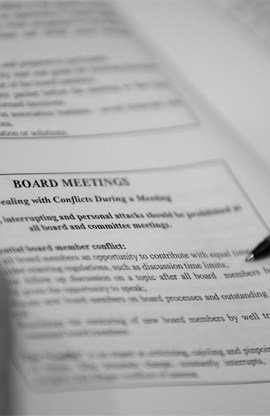By Beth Mulcahy, Esq.
Dog barking in associations and complaints by the surrounding owners are a common problem in community associations. Police state that barking dogs rank as one of the highest number of complaints they receive.
Set forth below are tips and ideas that might help quiet the neighborhood:
- Contact Dog Owner: The complaining parties should contact the dog’s owner to make them aware of the problem. Discussing the situation calmly with your neighbor can be the fastest and most effective way to resolve the problem. In many instances, a dog is barking when the owner is away from the home and the owner may not be aware of the problem. Owners tell animal control officers that they wished someone had talked to them before calling animal control. If you are hesitant about contacting the dog’s owner in person, animal control suggests that you leave a polite note on the door with your name and number to discuss the problem.
- Contact City/Town: Some owners/associations have contacted their city/town code enforcement or have resolved dog-barking conflicts through the use of city/town mediation programs. In addition, in extreme circumstances after repeated problems, some owners have called the police regarding the barking dogs.
Owners and associations have successfully suggested and used some of the following ideas and techniques to stop or limit dog barking in their association:
- Owners may not know how to handle a barking dog situation and would welcome education. The association may create or secure a special pamphlet regarding barking dogs (see address below) that they can send to offending residents.
- The owners inserted a dog door and “dog proofed” a section of the house providing dog toys and enticements. The dog chose the option of being comfy inside rather than bark at noises and neighbors;
- Ask a professional to speak on the subject at a board meeting;
- The complaining party, also a dog owner, offered to walk the offending dog while the owners were at work – a tired dog barks less;
- The owners limited the dog’s stimulation by restricting its line of sight; they covered the area at the bottom of the gate and fence;
- Dog daycare two or three times a week helps prevent boredom;
- Hire and work with a professional dog trainer;
- Bored dogs often act out. Keep the dog interested by providing a variety of approved toys appropriate for the dog’s size. Balls and other toys that are too small can easily be swallowed or become lodged in the dog’s throat. Toys that can be filled with broken-up treats keep dogs happy for hours. An old T-shirt, pillowcase, towel, or blanket, can be very comforting to a dog, especially if the item smells like the owner;
- Keep the TV or radio on. The background voices and music are comforting and will help reduce boredom; and
- Do interactive play with him/her and take long walks whenever possible.
Good luck with this issue.
